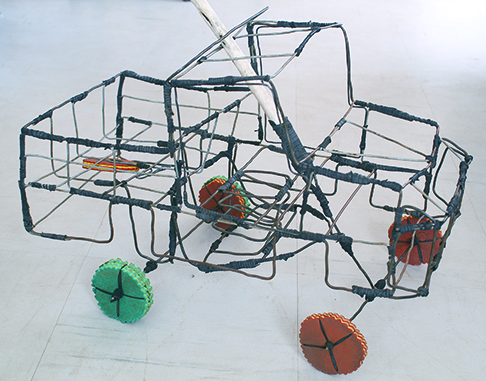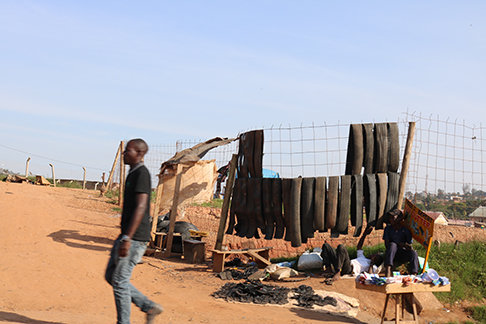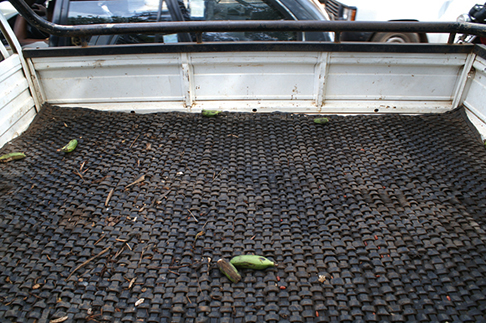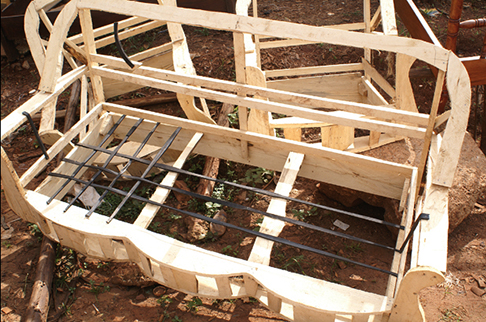David Stairs

Slingshot made from bicycle innertube
I’ve talked many times about how successful African DIY design is when it comes to recycling materials. Most African nations are not heavily industrialized, except those involved in mining, so technology and manufactured goods are often imported. What’s more, the climate in many parts of the continent fluctuates between hot and dusty, or torrentially wet— not an ideal scenario for many materials.
When things are “finished” in Africa they often assume a new life. Glass bottles, if not meant to be refilled by the bottler, find their way to local markets as containers for every sort of oil, from vegetable to mineral. PET water bottles are collected in huge bundles for recycling. Auto spares, cameras, and electric appliances are disassembled by an army of self-trained roadside technicians and given new lease on life. But one of the most amazing re-directions is what happens to durable materials.

Wire truck bound together with rubber strips
Take rubber, for instance. I’ve seen bicycle inner tubes cut into strips that are used to make everything from slingshots to wire trucks. So, if bike inner tubes then why not tires? Old tires are a potential hazard. In America they are looked at as a source of energy in waste-to-energy debates. But burning tires has its downside in the form of potential toxic pollutant releases. In Africa, unused dead tires are a nesting place for mosquito larvae and the consequent spread of malaria. Fortunately, Africans are loath to leave tires laying around. Instead, they put them back to work.

It starts with cutting tires up for other uses. The photo above was taken along the roadside near Kalerwe Market in Kampala, Uganda. You can see tire treads hanging on a rack awaiting future use, probably as second-hand sandals, like the ones piled on the ground.

I own a pair of lugabire, or “million-milers,” shown here, made from Marshall sidewalls. They aren’t very comfortable, but they will surely protect feet from bottlecaps, glass shards or, if you are in the bush, pesky thorns and sharp rocks. And they’re cheap!

Another application I’ve seen is as a bed liner for a pick-up truck. Bed liners for American pick ups can cost anywhere from $85 to $400 depending on size and brand. You can bet that the owner of this Kampala vehicle paid much less for this solution, woven from long tire strips.

Lastly, consider this alternative to sprung cushioning for an overstuffed couch. Here, the same tire strips used to make a truck bed liner are pressed into service as seat supports, an effective and affordable reuse of a widely available manufactured material.
Most Americans dutifully schlep their sorted recylables to the curb each week for someone else to figure out what to do with. Most often those PET and HDPE containers resurrect as polar fleece or plastic lumber. In Africa, a little ingenuity goes a long way to resolving material shortages and relieving toxic landfill waste, and sometimes the materials are actually upcycled.
David Stairs is the founding editor of the Design-Altruism-Project










